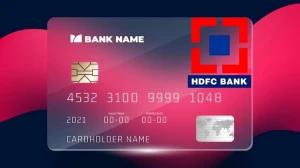
- Home »
- Credit Card »
- What is a Balance Transfer on a Credit Card and How Does it Work?
What is a Balance Transfer on a Credit Card and How Does it Work?
A balance transfer on a credit card involves moving existing debt to a new card with a lower or 0% introductory interest rate to reduce interest costs.
by Sangamithra
Published Sep 06, 2023 | Updated Sep 06, 2023 | 📖 9 min read
On This Page
- What is a Balance Transfer on a Credit Card?
- How Does Balance Transfer Work?
- What is a Balance Transfer Fee?
- What is the Process for Transferring Credit Balances?
- Who Qualifies for a Balance Transfer Card?Â
- Does a Balance Transfer Negatively Impact One's Credit?Â
- Is It Better to Opt for a Balance Transfer or Prioritize Paying Off the Debt Directly?
- What Are the Disadvantages Associated With Balance Transfers?Â
What is a Balance Transfer on a Credit Card?
A balance transfer on a credit card involves the process of shifting existing debt from one credit card account to another, typically with the primary goal of saving money on interest charges. This financial maneuver is particularly advantageous when moving high-interest debt to a credit card offering a 0% introductory APR on balance transfers.
While balance transfers can be a useful tool for debt management, they come with certain considerations, such as balance transfer fees and credit score requirements. To initiate a balance transfer, individuals generally apply for a credit card with the desired introductory offer, provide information about the debt they wish to transfer, and subsequently manage the balance on the new card, aiming to pay it off during the interest-free introductory period.
The choice of the right balance transfer card, one with minimal fees and a favorable introductory APR, plays a crucial role in maximizing the benefits of this financial strategy.
How Does Balance Transfer Work?
A balance transfer is a financial maneuver that allows individuals to shift existing debt from one credit card account to another. The primary motivation for doing so is to reduce the burden of high-interest charges. Here's a breakdown of how balance transfers work:
1. Identify the Need:
Balance transfers are particularly appealing for individuals who carry credit card debt with high interest rates. It's an effective strategy to save money on interest payments and accelerate debt repayment.
2. Seek the Right Card:
To initiate a balance transfer, individuals need to find a credit card with a 0% APR introductory offer on balance transfers. These offers are typically available to individuals with good or excellent credit scores. The goal is to secure a card that provides an interest-free window for a certain period, often ranging from 12 to 18 months.
3. Apply for the Card:
Once a suitable credit card is identified, the next step is to apply for it. The application process may involve a credit check, and approval is contingent on meeting the card issuer's criteria.
4. Initiate the Transfer:
After approval, the cardholder can initiate the balance transfer process. This typically involves providing information about the existing debt, such as the issuer's name, the outstanding balance, and the account details.
5. Wait for Approval:
The balance transfer request is reviewed and approved by the new credit card issuer. This process may take a couple of weeks or longer, during which time the cardholder should continue making payments on the old account to avoid late fees.
6. Transfer Completion:
Once approved, the new credit card issuer pays off the old account's balance directly. This amount, along with a balance transfer fee (usually 3% to 5% of the total transferred), is added to the new credit card.
7. Pay Down the Balance:
With the debt now transferred to the new card, the cardholder is responsible for making monthly payments on the new account. The key advantage is that these payments are interest-free during the introductory 0% APR period, allowing individuals to make substantial progress in paying off their debt.
8. Consider Other Debt Types:
It's worth noting that balance transfers are not limited to credit card debt alone. Some credit card issuers may permit transfers of other types of debt, such as auto loans or personal loans, onto a credit card.
What is a Balance Transfer Fee?
A balance transfer fee is a cost associated with moving an existing debt from one credit card or account to another, typically one offering a lower or 0% introductory interest rate. This fee is calculated as a percentage of the total balance being transferred, often ranging from 3% to 5%. For instance, if you're transferring a $1,000 debt and the balance transfer fee is 3%, you would be charged $30 as the fee.
While balance transfers can be a useful way to save on interest, it's crucial to consider this fee when evaluating the overall cost-effectiveness of transferring your balance, as it may impact the potential savings gained from lower interest rates.
What is the Process for Transferring Credit Balances?
The process for transferring credit balances, commonly known as a balance transfer, is a strategic financial maneuver that can help individuals with high-interest credit card debt save money and manage their obligations more efficiently. The following is a breakdown of the steps involved in transferring credit balances:
1. Reviewing Existing Debt:
The individual should start by thoroughly reviewing their existing credit card debt. This involves taking note of the outstanding balances on each card and the corresponding interest rates. This step is essential for assessing the potential benefits of a balance transfer.
2. Deciding Where to Transfer Debt:
Researching and identifying suitable credit cards for balance transfers is the next crucial step. The individual can choose between cards offering limited-time 0% APR balance transfer offers or cards with lower ongoing APR rates, depending on their financial objectives.
3. Reviewing the Offers on Other Cards:
Understanding the differences between various balance transfer offers is paramount. Some cards extend 0% APR to both purchases and balance transfers, while others apply it to one or the other. Paying attention to the duration of the promotional offer and any associated balance transfer fees is essential.
4. Comparing Top Picks:
The individual should compare the terms and conditions of their top card choices, taking into account balance transfer fees. Calculating the total cost of transferring the debt, factoring in the transfer fee, is crucial for making an informed decision.
5. Applying for the New Card:
Upon making a decision, the individual can proceed to apply for the selected credit card. They will need to provide the required personal and financial information during the application process. It's advisable to check their credit score beforehand, as balance transfer cards typically require good-to-excellent credit.
6. Gathering Information:
Once approved for the new credit card, the individual will receive the card along with their credit limit. At this point, they should gather the account numbers of the cards from which they plan to transfer balances and calculate the exact amount they intend to transfer, accounting for any balance transfer fees.
7. Creating a Payment Plan:
The individual should develop a payment plan based on the duration of the promotional period. If they are taking advantage of a 0% APR offer, the goal should be to pay off the debt within that timeframe to avoid accruing interest.
8. Completing the Balance Transfer:
Initiating the balance transfer process can be done either during the card application or by contacting the issuing bank afterward. The individual will need to provide information about the existing card, including the account number and the transfer amount. Maintaining timely payments on the old card is essential to avoid late fees.
Who Qualifies for a Balance Transfer Card?Â
Qualifying for a balance transfer card depends on several factors, primarily your creditworthiness. Card issuers typically assess your income and credit score when determining eligibility. While a higher credit score increases your chances of approval, individuals with lower credit scores may still be eligible but might face higher APRs.
It's crucial to note that if you apply for a balance transfer offer, it usually involves a hard credit inquiry, which can temporarily lower your credit score. Additionally, card issuers may consider your existing debt and payment history when making approval decisions. Meeting the issuer's criteria and demonstrating responsible credit management are key to securing a balance transfer card.
Does a Balance Transfer Negatively Impact One's Credit?Â
A balance transfer can potentially have both positive and negative impacts on an individual's credit. On the positive side, transferring high-interest credit card debt to a card with a lower interest rate can improve the individual's credit utilization ratio, a key factor in credit scoring. However, there are potential negative aspects to consider.
When applying for a balance transfer, the credit card issuer typically performs a hard credit inquiry, which can temporarily lower the individual's credit score. Additionally, if the individual doesn't manage the new credit card responsibly, such as by missing payments or accumulating new debt, it could negatively affect their credit.
Furthermore, transferring balances to existing cards could lead to higher utilization ratios, potentially harming the credit score. Overall, while balance transfers can be a valuable debt management tool, it's crucial for individuals to carefully monitor their credit and financial habits to minimize any adverse credit impacts.
Is It Better to Opt for a Balance Transfer or Prioritize Paying Off the Debt Directly?
Deciding whether to opt for a balance transfer or prioritize paying off debt directly depends on individual financial circumstances. Balance transfers can be advantageous when the promotional interest rate is significantly lower than the current rate, and you can pay off the balance within the promotional period.
This strategy can save you money on interest charges. However, if you're unable to pay off the balance within the promotional period or if the fees associated with the transfer are high, it may be more advantageous to focus on paying off the debt directly. Directly paying down the debt can free up your budget and potentially improve your credit score.
Ultimately, the choice between a balance transfer and direct debt repayment should align with your financial goals and your ability to manage the associated terms and conditions effectively.
What Are the Disadvantages Associated With Balance Transfers?Â
Balance transfers can be a useful tool for managing credit card debt, but they also come with several disadvantages to consider. One major drawback is the potential for balance transfer fees, which typically range from 3% to 5% of the transfer amount. Additionally, if the transferred balance isn't paid off within the promotional period, consumers may face high-interest rates on the remaining debt, potentially nullifying any initial savings.
Furthermore, balance transfers often require careful management of on-time payments, as missing even one minimum payment can lead to the loss of the introductory APR and result in penalty interest rates.
Lastly, balance transfers can impact credit scores due to hard credit inquiries, and transferring balances to existing cards may increase credit utilization ratios, potentially lowering credit scores. Therefore, while balance transfers can offer advantages, it's essential to weigh these disadvantages carefully before deciding if they are the right financial strategy.
What is a Balance Transfer on a Credit Card - FAQ
1. What is a balance transfer on a credit card?
A balance transfer involves moving existing credit card debt to another card, often with a lower or 0% introductory interest rate, to save on interest charges.
2. How does a balance transfer impact one's credit score?
A balance transfer can have both positive and negative effects. It may improve credit utilization but also result in a temporary credit score drop due to a hard credit inquiry.
3. Who qualifies for a balance transfer card?
Eligibility for a balance transfer card depends on creditworthiness, income, and credit history. Higher credit scores increase approval chances.
4. Are there disadvantages to balance transfers?
Yes, potential drawbacks include balance transfer fees, penalty interest rates if not paid off during the promo period, and credit score impacts.
5. Is it better to do a balance transfer or prioritize direct debt repayment?
The choice depends on individual circumstances. Balance transfers are ideal when rates are lower, and debt can be paid within the promo period; otherwise, direct repayment may be better.




